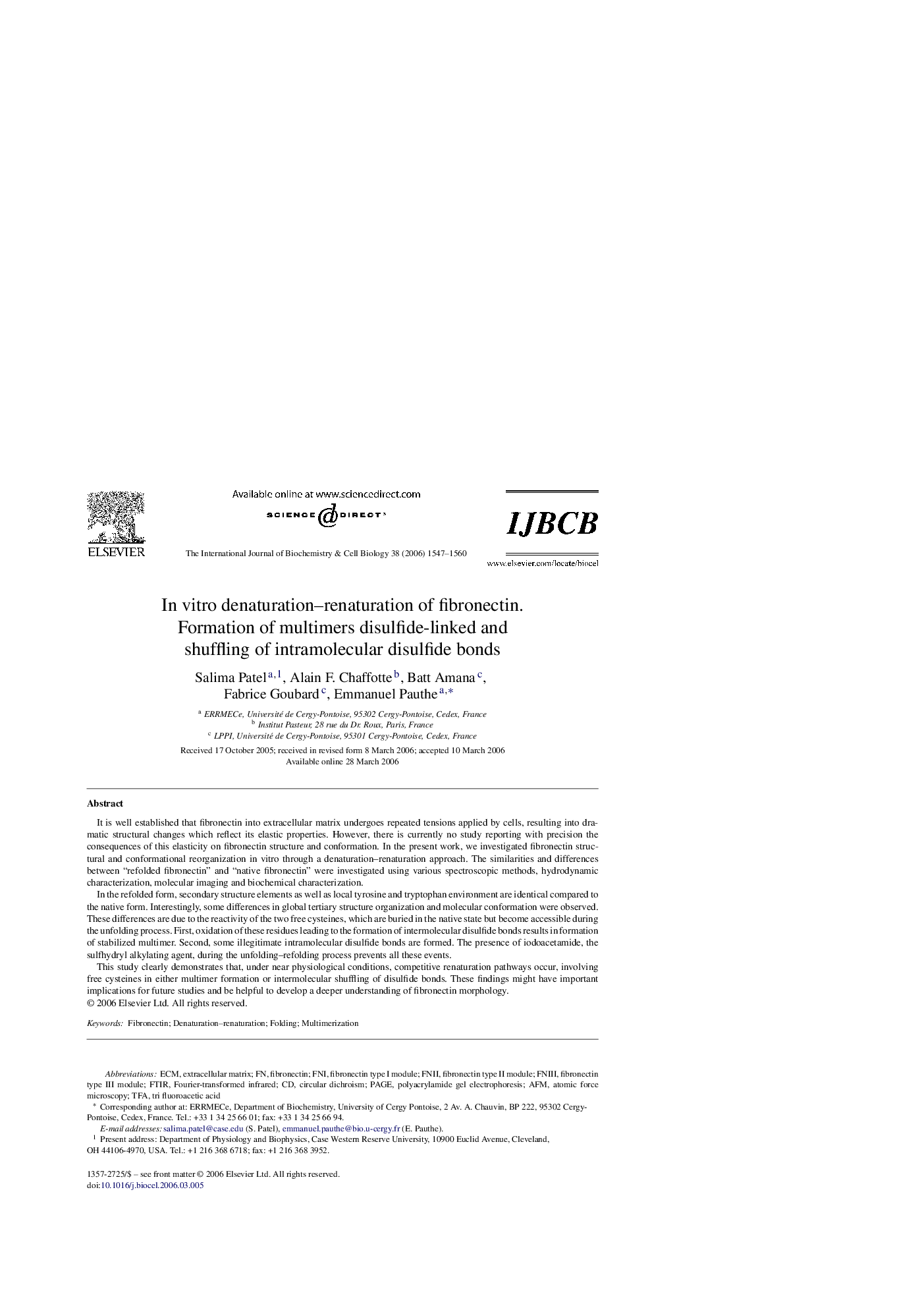| کد مقاله | کد نشریه | سال انتشار | مقاله انگلیسی | نسخه تمام متن |
|---|---|---|---|---|
| 1985431 | 1539983 | 2006 | 14 صفحه PDF | دانلود رایگان |

It is well established that fibronectin into extracellular matrix undergoes repeated tensions applied by cells, resulting into dramatic structural changes which reflect its elastic properties. However, there is currently no study reporting with precision the consequences of this elasticity on fibronectin structure and conformation. In the present work, we investigated fibronectin structural and conformational reorganization in vitro through a denaturation–renaturation approach. The similarities and differences between “refolded fibronectin” and “native fibronectin” were investigated using various spectroscopic methods, hydrodynamic characterization, molecular imaging and biochemical characterization.In the refolded form, secondary structure elements as well as local tyrosine and tryptophan environment are identical compared to the native form. Interestingly, some differences in global tertiary structure organization and molecular conformation were observed. These differences are due to the reactivity of the two free cysteines, which are buried in the native state but become accessible during the unfolding process. First, oxidation of these residues leading to the formation of intermolecular disulfide bonds results in formation of stabilized multimer. Second, some illegitimate intramolecular disulfide bonds are formed. The presence of iodoacetamide, the sulfhydryl alkylating agent, during the unfolding–refolding process prevents all these events.This study clearly demonstrates that, under near physiological conditions, competitive renaturation pathways occur, involving free cysteines in either multimer formation or intermolecular shuffling of disulfide bonds. These findings might have important implications for future studies and be helpful to develop a deeper understanding of fibronectin morphology.
Journal: The International Journal of Biochemistry & Cell Biology - Volume 38, Issue 9, 2006, Pages 1547–1560